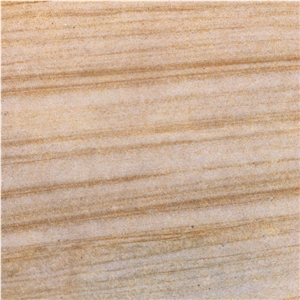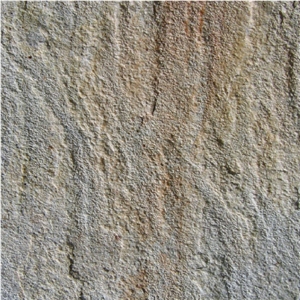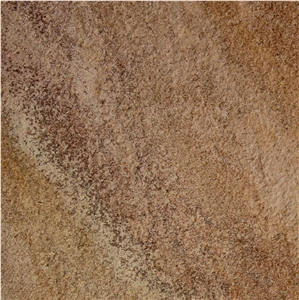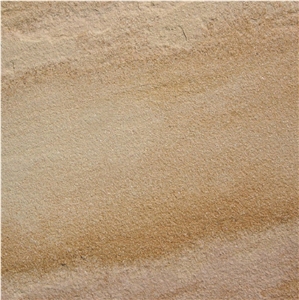Sandstone in Ukraine
( 4 )
Color:
Country:
-
 Additional Names:Ukraine Rainbow SandstoneUkraine Rainbow SandstonePost Request
Additional Names:Ukraine Rainbow SandstoneUkraine Rainbow SandstonePost Request Ukraine
-Sandstone
Ukraine
-Sandstone -
 Additional Names:Luhansk Gray Sandstone,Ukraine Grey SandstoneLuhansk Gray Sandstone,Ukraine Grey SandstonePost Request
Additional Names:Luhansk Gray Sandstone,Ukraine Grey SandstoneLuhansk Gray Sandstone,Ukraine Grey SandstonePost Request Ukraine
-Sandstone
Ukraine
-Sandstone -
 Additional Names:Ukraine Brown SandstoneUkraine Brown SandstonePost Request
Additional Names:Ukraine Brown SandstoneUkraine Brown SandstonePost Request Ukraine
-Sandstone
Ukraine
-Sandstone -
 Additional Names:Luhansk Beige Sandstone,Ukraine Beige SandstoneLuhansk Beige Sandstone,Ukraine Beige SandstonePost Request
Additional Names:Luhansk Beige Sandstone,Ukraine Beige SandstoneLuhansk Beige Sandstone,Ukraine Beige SandstonePost Request Ukraine
-Sandstone
Ukraine
-Sandstone
- 1
-
Can Poland's Mecina Sandstone be used exterior applications in hot climates?Polands Mecina Sandstone is a durable and weather-resistant material that can generally be used for exterior applications in hot climates. However, certain factors need to be considered before using this stone in such conditions. 1. Heat Resistance: Mecina Sandstone is known for its good heat resistance properties. It is less likely to crack or crumble due to exposure to high temperatures. Nevertheless, extreme temperature variations might cause considerable expansion and contraction, potentially leading to damage over time. If the region experiences excessive heat or rapid temperature fluctuations, additional care should be taken. 2. Porosity and Water Absorption: One important consideration for any natural stone used in exterior applications is its porosity and water absorption capacity. In hot climates that frequently experience rain or humidity, stones with a high porosity may absorb moisture and be prone to damage, such as cracking or staining. It is crucial to select a grade of Mecina Sandstone with lower porosity and perform proper sealing to minimize water absorption. 3. UV Resistance: Another factor to consider in hot climates is exposure to ultraviolet (UV) radiation. Prolonged exposure to strong sunlight can cause some stones to fade or undergo color changes. However, Mecina Sandstone is generally resistant to UV damage and maintains its original color for a long time. 4. Maintenance: Regular maintenance is essential to ensure the longevity of any exterior stone application. In hot climates, it becomes even more important to clean and inspect the sandstone regularly to remove dirt, debris, and any potential molds or algae growth. Overall, Polands Mecina Sandstone can be used for exterior applications in hot climates. Proper selection of the stone grade, sealing, and regular maintenance can help ensure its durability and aesthetics over time. Consulting a local architect or stonemason familiar with the specific climate conditions is recommended to determine the best suited applications and specifications for the particular hot climate region.Read More
-
Can Indonesia's Palimanan Sandstone be used in landscaping?Yes, Indonesias Palimanan Sandstone can be used in landscaping. Palimanan Sandstone is known for its naturally beautiful pale color and fine-grained texture, making it a popular choice for various landscaping projects. It can be used for paving stones, garden pathways, retaining walls, decorative boulders, and even for creating unique water features like fountains or cascades. Additionally, its durability and resistance to weathering make it a suitable material for outdoor use.Read More
-
How thick is United States's Oklahoma Sandstone slabs?I do not have access to specific information in real-time databases. However, I can provide general knowledge that Oklahoma Sandstone slabs are typically available in various thicknesses ranging from 1.5 inches to 3 inches, with some customizations available upon request. The actual thickness of a slab may also vary depending on the specific quarry from which the stone was sourced.Read More
-
Can China's Sichuan Black Sandstone be used in landscaping?Yes, Chinas Sichuan Black Sandstone can be used in landscaping. It is a durable and versatile material that can be used for various landscaping purposes. Sichuan Black Sandstone is often used for paving, patio areas, pathways, retaining walls, garden features, and decorative elements in landscapes. Its dark color and unique texture can add an elegant and natural look to outdoor spaces. Additionally, Sichuan Black Sandstone is known for its weather resistance, making it suitable for outdoor applications.Read More
-
Can United States's Texas Sandstone be used outdoors?Yes, Texas Sandstone can be used outdoors. Texas Sandstone is a durable and weather-resistant natural stone that can withstand outdoor elements such as sunlight, rain, and temperature changes. It is commonly used for outdoor applications like building facades, walkways, patios, and retaining walls. However, it is always recommended to consult with a professional or supplier to ensure that the specific type and grade of Texas Sandstone you have is suitable for your intended outdoor application.Read More
-
Can China's Wenge Sandstone be used exterior applications in hot climates?Yes, Chinas Wenge Sandstone can be used for exterior applications in hot climates. Wenge Sandstone is known for its durability and resistance to weathering, making it suitable for outdoor use. Its natural composition helps it withstand high temperatures, making it a viable option for hot climates. However, its important to note that proper sealing and installation techniques should be followed to enhance its longevity and protect it from potential damage caused by extreme weather conditions. Consulting with professionals and experts in stone installation can provide specific guidance tailored to your project and climate conditions.Read More
-
Can Spain's Albamiel Sandstone be used exterior applications in cold climates?Spains Albamiel Sandstone can be used for exterior applications in cold climates, but it is important to take certain precautions and consider the specific conditions of the location. Albamiel Sandstone is a sedimentary rock known for its durability and resistance to weathering, making it suitable for outdoor use. However, it is still porous and can absorb water, which can be a potential problem in colder climates. In cold climates, where temperatures drop below freezing and experience cycles of freezing and thawing, water can penetrate the stone and freeze within its pores. This can lead to the formation of ice crystals that can cause the stone to crack or break. To mitigate this risk, proper sealing and maintenance practices are necessary. Applying a suitable and high-quality stone sealant can help to reduce water absorption and increase the stones frost resistance. Regular resealing may be required to maintain the protective seal. Furthermore, proper installation techniques, including using an appropriate mortar or adhesive, can enhance the durability and resistance of Albamiel Sandstone in cold climates. The installation should take into account factors such as expansion and contraction due to temperature changes. It is also important to consider the specific climate conditions of the location where Albamiel Sandstone will be used. Factors such as the average annual temperature range, the frequency of freeze-thaw cycles, and the exposure to moisture or precipitation should be taken into account when considering the suitability of the stone for exterior applications. In summary, while Albamiel Sandstone can be used in exterior applications in cold climates, precautions such as sealing, proper installation techniques, and an understanding of the specific climate conditions are necessary to ensure its durability and longevity. Consulting with a professional stone supplier or installer can provide valuable insights and guidance for the specific project requirements.Read More
-
Is China Red Sandstone an expensive stone?I do not have access to up-to-date prices and market analysis. However, the pricing of China Red Sandstone can vary, depending on the quality, cut, size, and location of the supplier. It is best to consult with a stone supplier or dealer for more accurate pricing information.Read More
-
Can United Kingdom's Doddington Sandstone be used outdoors?Yes, Doddington Sandstone from the United Kingdom can be used outdoors. Doddington Sandstone is a type of natural stone that is typically durable, weather-resistant, and able to withstand various outdoor conditions. It can be used for a range of outdoor applications such as paving, patios, walkways, landscaping, and exterior cladding. However, it is important to note that proper installation, sealing, and regular maintenance are crucial to ensure its longevity and performance in outdoor settings.Read More
-
Can India's Dholpur Beige Sandstone be used in landscaping?Yes, Indias Dholpur Beige Sandstone can be used in landscaping. It is a popular choice for various landscaping applications due to its natural beige color and versatile texture. It can be used for pathways, patios, driveways, garden walls, seating areas, pool decks, and other outdoor areas. Additionally, the stones durability and resistance to weathering make it suitable for outdoor use in different climates.Read More
-
What is the coefficient of friction of Polished India's Sagar Black Sandstone tiles?I do not have access to current information or specific data on the coefficient of friction of Polished Indias Sagar Black Sandstone tiles. It is recommended to contact the manufacturer or supplier to inquire about this information.Read More
-
What is the coefficient of friction of Honed India's Bansi Pink Sandstone tiles?I am not able to access the coefficient of friction of Honed Indias Bansi Pink Sandstone tiles. Please refer to the manufacturers specifications or contact them directly for this information.Read More
-
How thick is Australia's Beelerup Sandstone slabs?I dont have access to d information or specific details about Australias Beelerup Sandstone slabs thickness and size. However, sandstone slabs can vary in thickness depending on the intended use and application. It can range from a few millimeters up to several inches. Its best to contact Australian stone suppliers or manufacturers for accurate measurements and thickness information.Read More
-
What grade is United States's Timber Creek Sandstone?United States Timber Creek Sandstone is classified as a rock formation, not a grade. It is primarily found in the Cretaceous period, which lasted from approximately 145 to 66 million years ago.Read More
-
Can Indonesia Green Sandstone be used exterior applications in very dusty climates?Indonesia Green Sandstone can be used in exterior applications in dusty climates, but it is important to consider a few factors. First, it is recommended to choose a finish that is suitable for the exterior environment. A honed or sandblasted finish is recommended as it can help reduce the visibility of dust and provide better traction. A polished finish may show dust more easily and can become slippery when wet. Second, regular cleaning and maintenance will be necessary to keep the stone looking its best in a dusty climate. It is advisable to use a gentle cleanser and a soft brush or cloth to remove dust and dirt. Avoid using harsh chemicals or abrasive materials that could damage the stone. Lastly, it is important to properly seal the sandstone to protect it from dust, stains, and other environmental elements. A high-quality penetrating sealer should be applied to the stone to create a protective barrier. The sealer should be reapplied periodically according to the manufacturers instructions. By considering these factors and taking appropriate care, Indonesia Green Sandstone can be successfully used in exterior applications in very dusty climates.Read More
-
What grade is Sweden's Lemunda Sandstone?Swedens Lemunda Sandstone is typically classified as a sedimentary rock of Precambrian age. It formed during the Neoproterozoic era, which predates the existence of complex life forms and the presence of multicellular organisms. Hence, it is not assigned a specific grade since the grading system is typically used to classify rocks and minerals that have educational implications.Read More
-
Can United Kingdom's Cotswold Sandstone be used in a kitchen?Yes, Cotswold Sandstone can be used in a kitchen. It is a high-quality natural stone that is often used for countertops, backsplashes, and flooring in kitchen design. It is durable, resistant to heat and stains, and can add a rustic and timeless look to the kitchen. However, its essential to properly seal and maintain the Cotswold Sandstone to ensure its longevity and prevent any damage from spills or heavy use.Read More
-
What is the coefficient of friction of Filled Poland's Kopulak Sandstone tiles?The coefficient of friction of Filled Polands Kopulak Sandstone tiles may vary depending on different factors such as the surface finish, presence of any sealant or coating, and the specific conditions of use. Therefore, it is recommended to consult the manufacturer or supplier of the tiles for the most accurate and up-to-date information regarding the coefficient of friction for these specific tiles.Read More
-
Are there color variations of Indonesia's Bobos Sandstone?I dont have a visual capacity to confirm the physical features of a certain type of sandstone. However, based on research, Bobos Sandstone in Indonesia typically has a light yellow to beige color and may have slight variations in pattern and texture. It is possible that there may be subtle differences in color depending on the location and depth from which the stone is quarried.Read More
-
How thick is Poland's Zbylutow Sandstone slabs?The thickness of Polands Zbylutow Sandstone slabs may vary depending on the specific product and individual preferences. However, common thicknesses for sandstone slabs range from 1-2 centimeters (0.4-0.8 inches) for thin slabs used in wall cladding or veneer applications, up to 3-5 centimeters (1.2-2 inches) for thicker slabs used in flooring or paving applications. Its best to consult with a supplier or manufacturer of Zbylutow Sandstone to get precise information on the available thickness options.Read More






